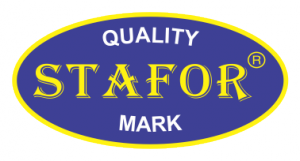EVA-022 universal (for galvanized metal too) rust converter-primer
A two-component, water-based universal rust converter-primer which absorbs deeply into rust and converts them to a 120mkm thick solid non-returnable polymer layer, completely stopping corrosion. Intended for the treatment of rusty, stainless and galvanized metal surfaces before painting.
A two-component, water-based universal rust converter-primer which absorbs deeply into rust and converts them to a 120mkm thick solid non-returnable polymer layer, completely stopping corrosion. Intended for the treatment of rusty, stainless and galvanized metal surfaces before painting. Applicable to construction, transport and shipbuilding and repair, agricultural machinery, tanks, pipeline repairs, etc. Consists of component No.1 (basic mass) and component No.2 (orthophosphoric acid). Intended for indoor and outdoor use.
SURFACE PREPARATION: No complete surface treatment for corrosion is required. Cleanse from dirt, rusty and loose rust and degreasing should be done.
SURFACE TREATMENT: Before applying add component No.1 to the component No.2, mix thoroughly. In 20 minutes, the mixture can be used for surface treatment using a brush, roller or spray. It can be applied on moist surface. The layer can be painted with any type of paint. If necessary, can be diluted with water. Wash the tools and hands with water.
CONSUMPTION: Depending on the surface 1l/8-10m² (0.5l/4-5m²).
DRYING TIME: 2-4h at a temperature 20°C, complete polymerization - 24h.
STORING: Store and use at a temperature of 3 ° C to 25 ° C, the expiry date is shown on the package.
APPLICATION MANUAL:
Type and effect: A two-component, water-based polymer system that converts corrosion products, completely stops the corrosion process by creating a durable coating (primer), spots are acceptable (depending on rust intensity). It consists of a base material with effective additives that can penetrate deeply into the thick rust layer, and orthophosphoric acid. On the metal surface there is formed a metal layer of up to 20 microns thick phosphate. Total thickness of the coating depends on the thickness of corrosion products layer, from 30 mkm on pure metal, to 120 mkm on rusty metal.
As a result of polymerization, a layer of rust up to 120 mkm thick is transformed into a solid, non-reversible film that can be repainted with any type of paint - perchlorovin, polyvinyl chloride, epoxy, polyester, polyurethane, alkyd, silicon organic, oil, nitrocellulose water emulsion, bitumen and other varnish-colored materials. After the treatment (without over coating) repeated rust in atmospheric conditions has not been observed on test samples earlier than 5 years.
Usage: Designed for the treatment of rusty metal surfaces in building structures, road transport, shipbuilding and repair, railway transport, bridge construction, repair of tanks, pipelines, tin roofs, as well as stairways, fences, gates, doors, drainage pipes, metal garden furniture, park inventory, etc. priming before painting. Used for outdoor and indoor use. CAN BE USED ON CLEAN METAL, OLD COATING, AND GALVANIZED SURFACE.
Surface preparation: It does not require labour-intensive and expensive surface treatment (sand blasting, etc.) until complete corrosion purification. The surface is purified from dirt, loose rust using hand metal brush, or with electric hand tools. If the surface is oily, degrease it with a diluent, if it is not oily degrease with soap water. Can be applied on a moist surface.
Usage: Before use, add 5 to 7% of orthophosphoric acid (by weight) to the basic mass, mix thoroughly, keep it for about 20 minutes, then treat the rusty surface with the finished mixture with a brush, roller or paint spray. After 2 hours (+20ºC) rusting process is completely stopped. Complete polymerization, depending on the air temperature and atmospheric humidity, takes place within 2-15 hours. Priming should be avoided if the sun's rays fall directly onto the surface, as corrosion products may not be completely modified due to excessive drying. When working outdoors, it should be taken into account that the work must be carried out in such a way that the complete polymerization takes place before the beginning of the rain, otherwise the composition will be washed off from the treated surface. Content should be applied on 100% of the surface to be treated. Over coating must be applied on 100% of the surface to be treated. Good results are achieved as over coatings using epoxy-based paint materials.
If necessary, dilute with water. Instruments and hands are washed with water. It is harmless to the environment, it is fire and explosive safe.



